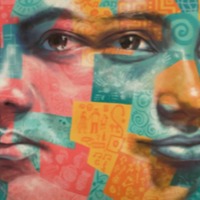
Thanh
The Global Slavery Index 2018 estimates that on any given day in 2016, an estimated 3.6 million men, women and chidlren were living in modern slavery in Europe and Central Asia (GSI 2018). People are subjected to exploitation in forced labour, debt bondage and forced sexual exploitation. Government response in Europe is particularly strong with a number of regional bodies holding them account and monitoring responses, and while countries in Central Asia have taken steps to tack modern slavery, more needs to be done. First trafficked at the age of five with her parents out of Vietnam into China, she and her family were promised a better life. At the age of 15, Thanh had to sleep with so many men it left her with permanent damage to her spine. She was trafficked to Russia to pick fruit, across a continent to France for sex work in a forest encampment: separated from her 11-year-old son and thrown into a refrigerated lorry to be smuggled to England. In London, she was taken to a basement for sex work and labour packing vegetables. One day she seized an opportunity to flee barefoot. Undocumented, Thanh was afraid to go to the police and only received help after a lump in her breast made her go to a doctor. Eventually she was recognised as a victim of modern slavery and with the help of the British Red Cross was reunited with her son.
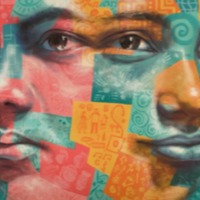
Amobi
There is an estimated 48,000 people living in modern slavery in Libya (GSI 2018). Libya is a major transit destination for migrants and refugees hoping to reach Europe by sea. Human trafficking networks have prospered amid lawlessness, created by the warring militias that have been fighting for control of territories since the toppling of Muammar Gaddafi in 2011. Highly organized trafficking and migrants smuggling networks that reach into Libya from Niger, Nigeria, Chad, Eritrea, Ethiopia, Somalia, Sudan, and other sub-Saharan states subject migrants to forced labor and forced prostitution through fraudulent recruitment, confiscation of identity and travel documents, withholding or non-payment of wages, debt bondage, and verbal, physical, and sexual abuse. In some cases, migrants reportedly pay smuggling fees to reach Tripoli, but once they cross the Libyan border they are sometimes abandoned in southern cities or the desert where they are susceptible to severe forms of abuse and human trafficking. Amobi* moved to Benin after the death of his father. He was told to travel to Europe through Libya, where he was trafficked through debt bondage.
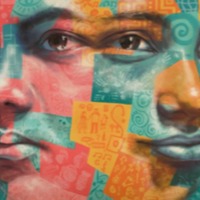
Shin Dong Hyuk (Narrative 2)
The Global Slavery Index 2018 estimates that there are 2,640,000 people living in conditions of modern slavery in The Democratic People’s Republic of Korea (North Korea). Men, women and children are subjected to forced labour and sex trafficking. Government oppression in the DPRK prompts many North Koreans to flee the country in ways that make them vulnerable to human trafficking in destination countries. Many of the estimated 10 000 North Korean women and girls who have migrated illegally to China to flee abuse and human rights violation are particularly vulnerable to trafficking. Some lure, drug, detain or kidnap North Korean women on their arrival, others offer jobs but subsequently force the women into prostitution, domestic service, or forced marriage. If found, Chinese authorities often repatriate victims back to the DPRK where they are subjected to harsh punishment including forced labour in labour camps or death. Shin Dong Hyuk was born in a North Korean prison labour camp in 1982. He tells of his experience growing up in the camp and being forced to work from a very young age. In the camp, food was restricted and beatings were common, by both prison officers and Shin Dong’s own mother. When he was fourteen, Shin Dong’s mother and brother attempted to escape the camp. He was forced to watch their execution and tortured himself for presumped involvement in their escape. In late 2004 Shin Dong was partnered with a man who had seen the outside world and they began to plan their own escape. In January 2005, they escaped while collecting firewood, however Shin Dong was the only one to succeed.
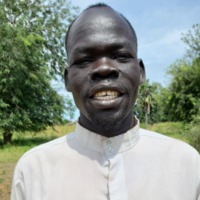
Makuom Mawein Tong
There are an estimated 465,000 people living in modern slavery in Sudan (GSI 2018). Between 1983 and 2005, the central government of Sudan enslaved tens of thousands of black South Sudanese Christian and traditionalist people. It was part of a genocidal war against South Sudan, with a simple aim: to force South Sudan to become Arab and Muslim. Makuom was born in Akoch Atong Mabil village, north of Aweil town. As a young boy in 1980s his father enrolled him in a school near his village, but a few days later, news was everywhere that Arabs were planning to attack Dinka tribe villages. His father pulled him from school and kept him at home because he was so afraid of Arab attack. At night during the dry season, Arabs attacked his village. Makuom ran and hid in a nearby forest. Many people from his village ran to the forest, but Arabs followed them. His father was killed by Arabs and captured him with others. All children who were captured were forced to walk with Arabs to north Sudan.
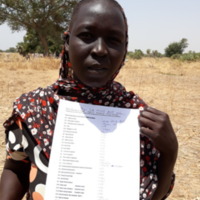
Dhan Deng Bol
There are an estimated 465,000 people living in modern slavery in Sudan (GSI 2018). Between 1983 and 2005, the central government of Sudan enslaved tens of thousands of black South Sudanese Christian and traditionalist people. It was part of a genocidal war against South Sudan, with a simple aim: to force South Sudan to become Arab and Muslim. Dhan Deng Bol was abducted in 1998. She tells of her experience that ended in those captured being divided amongst their kidnappers and forced into domestic service.
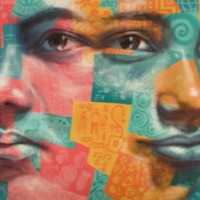
Habtu
There are an estimated 451,000 people living in modern slavery in Eritrea (GSI 2018). The small country has a unique system of compulsory, open-ended military service for citizens that makes it one of the most oppressive states in the world. The government has enforced its current policy of sending all secondary school students to serve for a minimum of twelve months since 2003. While Eritrean law puts the minimum conscription age at 18, many teenagers find themselves recruited during high school at age 16 or even younger. In rural areas, where formal education is rarer, the army will visit villages to round up young girls and boys who look roughly of age, to begin their program of combat training and forced labour. Habtu was taken to Sawa training camp in 2010. There he was forced to cook the soldier’s meals and was subjected to physical abuse daily.
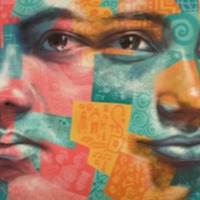
Kidane
There are an estimated 451,000 people living in modern slavery in Eritrea (GSI 2018). The small country has a unique system of compulsory, open-ended military service for citizens that makes it one of the most oppressive states in the world. The government has enforced its current policy of sending all secondary school students to serve for a minimum of twelve months since 2003. While Eritrean law puts the minimum conscription age at 18, many teenagers find themselves recruited during high school at age 16 or even younger. In rural areas, where formal education is rarer, the army will visit villages to round up young girls and boys who look roughly of age, to begin their program of combat training and forced labour. Kidane was 16 years old when he was sent for military training at Sawa. After training he was forced to work in farming and construction, until he was able to flee the country in 2012.
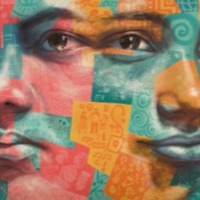
Gowri
There are an estimated almost 8 million people living in modern slavery in India (GSI 2018). India has a population of more than 1.3 billion people, with at least 270 million people still living on less than US$1.90 per day. Existing research suggests that all forms of modern slavery continue to exist in India, with forced labour, including debt bondage, constituting India’s largest trafficking problem. Situations of debt bondage are often aggravated by the need to raise emergency funds or take on loans for health crises. Sometimes entire families are forced to work in brick kilns, rice mills, embroidery factories and agriculture. Gowri and her husband wanted to support their children and pay for their medical bills, so they took out a loan from a factory owner, agreeing to work in his brick kiln and wood-cutting facility to pay off the debt. This turned out to be a trick, and the owner continually increased the loan, violently forcing the family to continue working long hours for him. Even when Gowri paid of her debt and tried to leave to find a safer workplace, her employer attacked her. This abuse continued for nearly 10 years, until IJM was able to send rescue. Today, the slave owner is standing trial, and the family is safe.
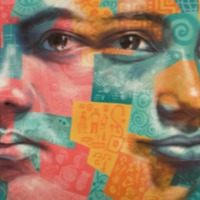
Roja
It is estimated that almost 8 million people are living in conditions of modern slavery in India (GSI 2018). The skewed sex ratio in some regions of India has fuelled the trafficking and selling of women and young girls as brides within India. Women are reportedly sold off into marriage by their families, sometimes at a young age, and end up enduring severe abuse, rape and exploitation by their husbands. It is also reported that women and girls from impoverished backgrounds have been lured by promises of marriage by younger men from urban areas, then forced into sex work once married. Roja was forced to marry at the age of 15. She has no food and goes around the neighbourhood begging for rice, oil and some food. Neighbours felt sorry for her in the beginning and tried to give her some supplies but now they avoid her. She is going through immense anxiety and depression. Roja curses her parents for not listening to her and getting her married at such a young age. The community is working on her husband to abandon her and remarry since she miscarried four times. She feels that no other girl should face problems as she did.
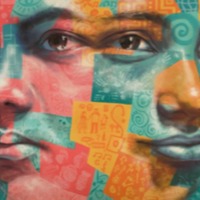
Mardannapalle Pallavi
It is estimated that almost 8 million people are living in conditions of modern slavery in India (GSI 2018). The skewed sex ratio in some regions of India has fuelled the trafficking and selling of women and young girls as brides within India. Women are reportedly sold off into marriage by their families, sometimes at a young age, and end up enduring severe abuse, rape and exploitation by their husbands. It is also reported that women and girls from impoverished backgrounds have been lured by promises of marriage by younger men from urban areas, then forced into sex work once married. Pallavi was forced to marry at the age of 13, giving birth to a baby boy just a year later. After the birth of her son Pallavi worked long hours in the house and in the field, and was subjected to physical abuse by her husband. Pavalli now has 3 sons. Having had no health care through her pregnancies, she is weak, undernourished and depressed. She thinks only suicide will release her.
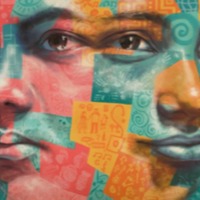
Sujatha
It is estimated that almost 8 million people are living in conditions of modern slavery in India (GSI 2018). The skewed sex ratio in some regions of India has fuelled the trafficking and selling of women and young girls as brides within India. Women are reportedly sold off into marriage by their families, sometimes at a young age, and end up enduring severe abuse, rape and exploitation by their husbands. It is also reported that women and girls from impoverished backgrounds have been lured by promises of marriage by younger men from urban areas, then forced into sex work once married. Sujatha resisted the prospect of marriage but felt that she had to accept at the age of 15. After marriage, Sujata did all the work at home as well as casual labour, being subjected to physical abuse when her husband came home drunk.
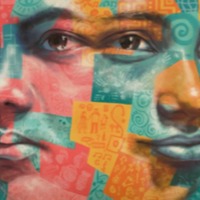
Rajyamma
It is estimated that almost 8 million people are living in conditions of modern slavery in India (GSI 2018). The skewed sex ratio in some regions of India has fuelled the trafficking and selling of women and young girls as brides within India. Women are reportedly sold off into marriage by their families, sometimes at a young age, and end up enduring severe abuse, rape and exploitation by their husbands. It is also reported that women and girls from impoverished backgrounds have been lured by promises of marriage by younger men from urban areas, then forced into sex work once married. After marriage, Rajyamma’s mother-in-law forced her to work long hours without rest while she was pregnant. After giving birth to a boy, Rajyamma returned to her in-law's house and continued to work, being forced to give all her earnings to her husband.
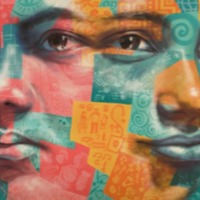
Pilli Lavanya
It is estimated that almost 8 million people are living in conditions of modern slavery in India (GSI 2018). The skewed sex ratio in some regions of India has fuelled the trafficking and selling of women and young girls as brides within India. Women are reportedly sold off into marriage by their families, sometimes at a young age, and end up enduring severe abuse, rape and exploitation by their husbands. It is also reported that women and girls from impoverished backgrounds have been lured by promises of marriage by younger men from urban areas, then forced into sex work once married. Pilli Lavanya recounts how, despite her resistance, she faced tremendous pressure to marry before she had completed her education. Soon after her marriage, Lavanya tells how she was expected to work from 6am both in the home and fields, as well as having her eating habits regulated. When Lavanya became pregnant, she did not receive adequate healthcare and faced hostility from her husband and his family after giving birth to a girl.
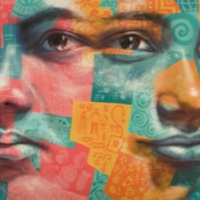
Chittamma
It is estimated that almost 8 million people are living in conditions of modern slavery in India (GSI 2018). The skewed sex ratio in some regions of India has fuelled the trafficking and selling of women and young girls as brides within India. Women are reportedly sold off into marriage by their families, sometimes at a young age, and end up enduring severe abuse, rape and exploitation by their husbands. It is also reported that women and girls from impoverished backgrounds have been lured by promises of marriage by younger men from urban areas, then forced into sex work once married. Chittamma was forced to marry her cousin when she was 17 years old. Though Chittamma goes out for wage work, everything she earns is given to her husband and she does not have enough food to eat.

Bopha
The internal migration of Chinese people seeking work has created an opportunity for human traffickers in China. Moreover the gender imbalance caused by the One Child Policy and the cultural preference for male children, has caused a shortage of women which has led to the trafficking of women to be sold as brides. As a result many women find themselves either deceived by promises of employment, sold or abducted and forced into marrying Chinese men who have paid for them. The prevalence of poverty in China makes the poor more vulnerable to enslavement. With the National Bureau of Statistics estimating that 70,170,000 are still living in poverty, people are more desperate and thus more likely to be receptive to fraudulent job offers. Bopha left her factory job in Phnom Penh when she was told she could find work with a high salary in China. However, upon arrival Bopha was taken to the Bride Market and sold to a man with mental health issues.
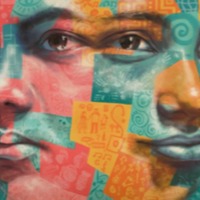
Noi
The internal migration of Chinese people seeking work has created an opportunity for human traffickers in China. Moreover, the gender imbalance caused by the One Child Policy and the cultural preference for male children, has caused a shortage of women which has led to the trafficking of women to be sold as brides. As a result, many women find themselves either deceived by promises of employment, sold or abducted and forced into marrying Chinese men who have paid for them. The prevalence of poverty in China makes the poor more vulnerable to enslavement. With the National Bureau of Statistics estimating that 70,170,000 are still living in poverty, people are more desperate and thus more likely to be receptive to fraudulent job offers. Noi was just 17 years old when she was forced to drop out of high school in northern Laos’ Luang Namtha province to earn money for her family. When a middleman approached her in early 2015 about marrying a man across the border in China in exchange for around 40 million kip (U.S. $4,830)—despite the legal age for marriage in China being 20—she jumped at the chance. After holding a small party with her relatives, according to the traditions of her Leu ethnic group, Noi travelled to China to live with the man. During the first three months, he treated her kindly and sent small payments to her parents in Laos, but soon his demeanour changed and he began to beat her.

Buy
It is estimated that 425,500 people are enslaved in Thailand, with the many subjected to forced labour. Women overseas-workers most often find employment in private households or service sectors, often finding themselves having to pay significant fees for the migration and recruitment process. Domestic servitude is also prevalent with the majority of enslaved being women from rural Thailand, Cambodia, Laos and Myanmar. Victims are often physically and sexually abused, confined to the house and find their pay and identity documents withheld. Buy fled his home in Myanmar after he was forced to join the army and travelled to Thailand. In Thailand, Buy worked for two or three years in the agricultural sector without pay. When he did start asking for the wages that were owed to him, his employers called the police, and because he was undocumented, Buy was arrested. Buy found his way to the Chai Lai Eco Retreat which helps undocumented workers who have been trafficked in Thailand. They assisted him in getting a passport and work permit which ensures he is paid minimum wage.
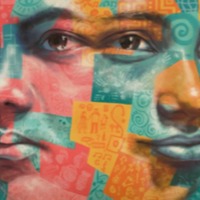
Rakesh
India has a population of more than 1.3 billion people, there are still at least 270 million people living on less than US$1.90 per day. While laws, systems and attitudes regarding key 'fault lines' such as the caste system, gender and feudalism are rapidly changing, social change of this depth and scale necessarily takes time. In this context, it is perhaps unsurprising that existing research suggests that all forms of modern slavery continue to exist in India, including intergenerational bonded labour, forced child labour, commercial sexual exploitation, forced begging, forced recruitment into nonstate armed groups and forced marriage. Rakesh was 6 years old when he was kidnapped and forced to work long hours, drugged and beaten on a daily basis. Rakesh was finally rescued and taken to Bal Ashram where he received an education.
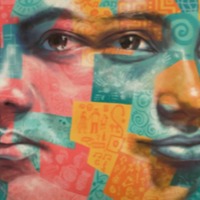
Amira
The Central African Republic is a source, transit and destination country for men, women and children trafficked for the purposes of forced labour and sexual exploitation. The majority of those trafficked are children subjected to sexual exploitation, domestic servitude, ambulant vending and forced labour. Moreover, civil unrest in the country has led rebels such as the anti-balaka to conscript children into armed forces in the northwestern and northeastern regions, as well as kidnap, rape and subject to conditions of modern slavery, many Muslim women in the country. Amira, 16, said that anti-balaka held her near Yaloké, in the Ombella-M’poko province, for 18 months beginning around February 2014, along with two other Muslim women who suffered similar abuse, one of whom was pregnant at the time. She was beaten with a whip and a machete, subjected to repeated gang rape, and made to do housework.
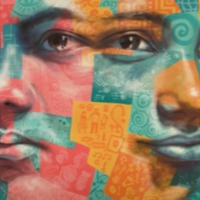
Ana B
There are an estimated 57,700 people in modern slavery in the US according to GSI estimates. The US attracts migrants and refugees who are particularly at risk of vulnerability to human trafficking. Trafficking victims often responding to fraudulent offers of employment in the US migrate willingly and are subsequently subjected to conditions of involuntary servitude in industries such as forced labour and commercial sexual exploitation. Low, semi- and unskilled domestic and foreign labourers are at risk of forced labour within the agricultural sector. Migrants from Mexico have been found in conditions of forced labour in the USA, where they are subjected to poor living and working conditions including excessive working hours, withholding and non-payment of salaries, confinement to plantations, refusal of medical care and physical and sexual abuse. Ana crossed the Mexico-US border seeking the American Dream and to provide a better life for her son. However instead, she found herself forced to work long hours picking fruit, with little pay and poor living conditions under the threat of violence. Ana was finally freed when two people she had asked for help called the police.